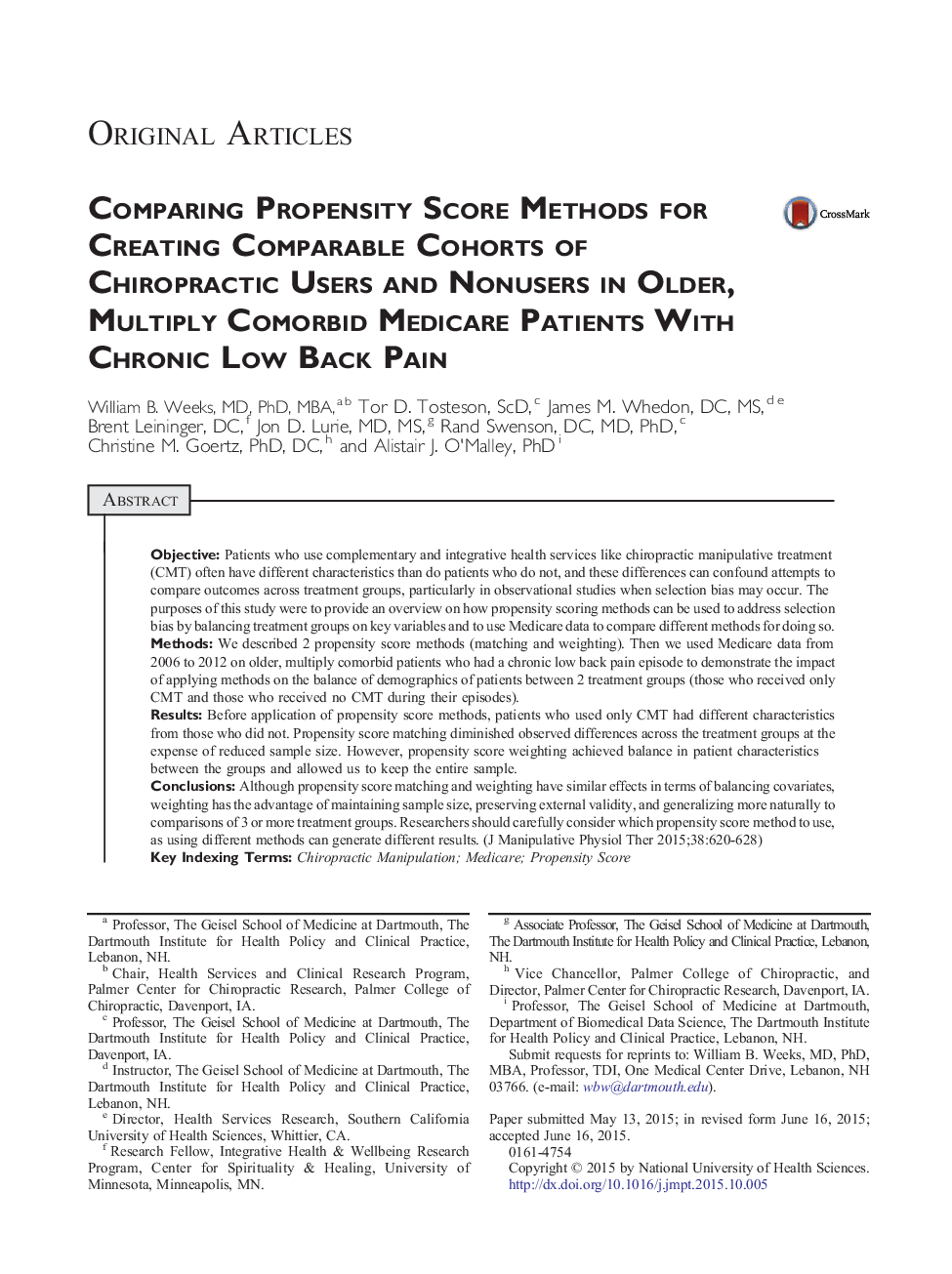| Article ID | Journal | Published Year | Pages | File Type |
|---|---|---|---|---|
| 2620493 | Journal of Manipulative and Physiological Therapeutics | 2015 | 9 Pages |
ObjectivePatients who use complementary and integrative health services like chiropractic manipulative treatment (CMT) often have different characteristics than do patients who do not, and these differences can confound attempts to compare outcomes across treatment groups, particularly in observational studies when selection bias may occur. The purposes of this study were to provide an overview on how propensity scoring methods can be used to address selection bias by balancing treatment groups on key variables and to use Medicare data to compare different methods for doing so.MethodsWe described 2 propensity score methods (matching and weighting). Then we used Medicare data from 2006 to 2012 on older, multiply comorbid patients who had a chronic low back pain episode to demonstrate the impact of applying methods on the balance of demographics of patients between 2 treatment groups (those who received only CMT and those who received no CMT during their episodes).ResultsBefore application of propensity score methods, patients who used only CMT had different characteristics from those who did not. Propensity score matching diminished observed differences across the treatment groups at the expense of reduced sample size. However, propensity score weighting achieved balance in patient characteristics between the groups and allowed us to keep the entire sample.ConclusionsAlthough propensity score matching and weighting have similar effects in terms of balancing covariates, weighting has the advantage of maintaining sample size, preserving external validity, and generalizing more naturally to comparisons of 3 or more treatment groups. Researchers should carefully consider which propensity score method to use, as using different methods can generate different results.
